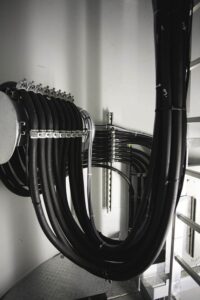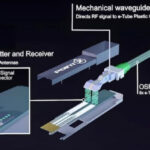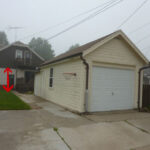Wind power has become one of the fastest-growing renewable energy sources worldwide. While turbines capture the wind and convert it into electricity, it is wind turbine cables that ensure this power is safely and efficiently transmitted to the grid. These cables act as the nervous system of a wind farm, carrying electricity and signals under extreme mechanical, thermal, and environmental stresses.

wind turbine tower cables
Depending on their location and function, wind power cables are divided into several categories, each with unique technical requirements. This article explores the main types of wind turbine cables, their applications, and their role in the rapidly expanding offshore and onshore wind markets.
1. Tower Cables (Internal Tower Wiring)
Inside the wind turbine tower, cables connect the nacelle to the base, transmitting generated power to ground-level switchgear.
Function: Carry generated electricity vertically down the tower.
Key Requirements:
High flexibility – to facilitate installation in narrow spaces.
Torsion resistance – must withstand constant yaw movement of the nacelle.
Fire resistance and thermal stability – safety in confined tower environments.
Typical Designs: Flexible low- and medium-voltage cables with halogen-free, flame-retardant insulation.
2. Nacelle Cables
The nacelle houses the generator, transformer, gearbox, sensors, and control systems. This makes it the most cable-dense part of a wind turbine.
Function: Connect generator to transformer, link sensors and control systems.
Cable Types:
Power cables (low and medium voltage).
Control and instrumentation cables (for monitoring and automation).
Key Requirements:
Oil, grease, and temperature resistance.
Vibration resistance and durability in confined, rotating environments.
Compact, lightweight design to minimize nacelle load.
3. Array Cables (Inter-Array Cables in Wind Farms)
In large wind farms, especially offshore, array cables connect multiple turbines together and deliver their combined output to a central offshore substation.
Function: Interconnect turbines and create the internal power network of the wind farm.
Key Requirements:
Submarine design (for offshore wind farms).
High mechanical strength to endure seabed installation.
Corrosion and water resistance against seawater exposure.
Long service life with minimal maintenance.
Materials & Construction: Cross-linked polyethylene (XLPE) insulation, polyethylene sheathing, and sometimes armoring for seabed protection.
4. Export Cables (Transmission to Shore)
Export cables are the backbone of offshore wind farms, transmitting electricity from the offshore substation to the onshore grid. These are the most expensive and technically challenging cables in the entire wind farm infrastructure.
Function: Deliver large-scale power over long distances from offshore to onshore.
Cable Types:
HVAC (High-Voltage Alternating Current) cables – suitable for shorter distances.
HVDC (High-Voltage Direct Current) cables – ideal for long-distance, high-capacity transmission with lower losses.
Key Requirements:
Extremely high voltage capacity (up to hundreds of kV).
Strong mechanical design for deep-sea installation.
25–30 years lifespan to match wind farm design life.
Cost Impact: Export cables typically account for 15–20% of the total offshore wind farm budget.
Wind Cable Applications: Onshore vs. Offshore
Onshore Wind: Shorter cable runs, less environmental stress, focus on flexibility and cost-efficiency.
Offshore Wind: Long transmission distances, harsh seawater conditions, high voltages, and greater investment in durability and performance.
Future Outlook: Why Wind Power Cables Matter
As global wind energy capacity continues to rise, particularly in offshore wind farms, the demand for high-performance wind turbine cables is expected to grow dramatically. Innovations such as dynamic submarine cables for floating wind farms, higher voltage HVDC export cables, and smarter control cables with fiber optic integration will shape the next generation of wind energy transmission.
Conclusion
Wind turbine cables are more than just conductors – they are the lifeline of modern wind farms.
Tower cables provide flexibility inside the turbine.
Nacelle cables connect critical components in the turbine’s core.
Array cables interlink turbines across a farm.
Export cables deliver clean power to the grid.
Selecting the right type of cable ensures efficiency, safety, and long-term reliability in both onshore and offshore wind projects. As the wind power industry scales up, investment in advanced cable solutions will remain essential to the success of renewable energy infrastructure.





